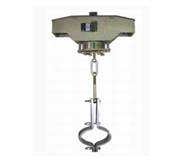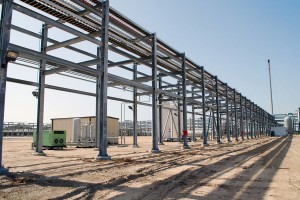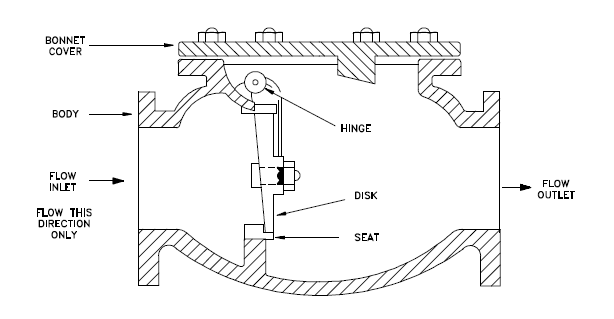A pipe support is a device designed to carry the weight of a pipe, any in-line equipment and the material in the pipe over a defined span. The four main functions of a pipe support are to guide, anchor, absorb shock and support a specified load. Pipe supports used in high or low temperature applications may contain insulation materials. The overall design configuration of a pipe support assembly is dependent on the loading and operating conditions.
There are number of pipe supports that can be installed to support dead weight loads and to restrain the pipe from thermal and dynamic loads.
Type of pipe supports
Hanger type pipe support
A vertical pipe support that incorporates a rod. It may be a rigid, variable spring or constant support hanger.
Variable spring pipe support
Often called as a variable spring hanger (VSH), it is a helical coil that supports dead weight load. The support load changes as the spring moves through its range at a specified spring rate. This support can be a hanger above the pipe, or a floor support below the pipe.
Rigid pipe support
Rigid pipe support is designed to allow no movement in at least one direction.
Rigid Hanger
A hanger type pipe support which uses a rigid rod.
Anchor pipe support
A rigid pipe support that restricts movement in all three orthogonal directions and all three rotational directions. This usually is a welded stanchion that is welded or bolted to steel or concrete.
Axial restraint support
A pipe support designed to restrict movement down the centreline of the pipe. This is usually reserved to reference a horizontal pipe restraint.
Lateral Restraint support
A pipe support designed to restrict movement of the pipe in a direction perpendicular to pipe axis.
Hydrualic Snubber
A pipe support with a piston and hydraulic reservoir designed to restrict dynamic movement, but allow nearly free movement due to thermal loads.
Mechanical Snubber
A pipe support designed to restrict dynamic pipe movement by a mechanical device internal to the snubber. Mechanical snubbers were prone to failure that restricted pipe movement and they are rarely used anymore.
During normal operating conditions, the snubber allows for movement in tension and compression. When an impulse event occurs, the snubber becomes activated and acts as a restraint device. The device becomes rigid, absorbs the dynamic energy, and transfers it to the supporting structure.
Sway Brace
A variable spring designed to have no load in the centre of the springs and restricts movement in either direction from the spring centreline.
Limit Stop
A restraint in any direction that allows a defined movement before acting as a rigid restraint.
Stanchion
A pipe support made of pipe that is welded to the pipe to be supported. Usually installed below a horizontal pipe.
Dummy Leg
A stanchion support attached to an elbow on a horizontal pipe. Commonly used on pipe in pipe racks to extend the support.
There are many methods of combining supports, such as dummy leg with a rigid rod hanger, or an axial limit stop with a lateral restraints, etc.
Standards for pipe supports and spacing
ASME B31.1 standard can be used for design and erection of piping support structures. The standard spacing between piping supports is also recommended by the same ASME standard.








